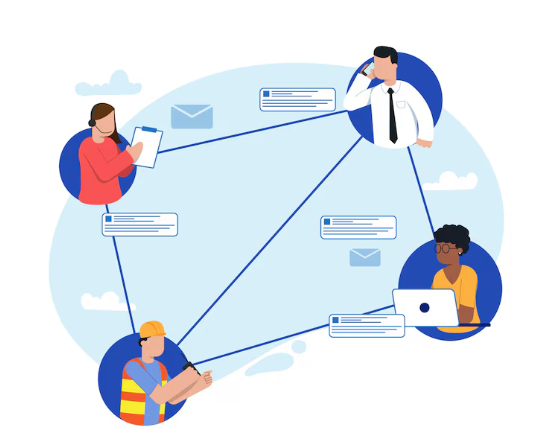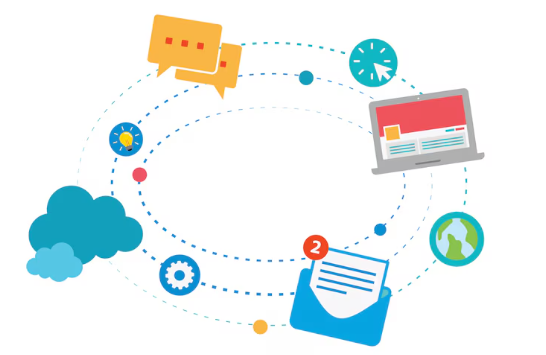Improved Communication & Collaboration For Construction Industry

The construction industry thrives on teamwork. Improved communication and collaboration emerge as essential cornerstones for success, ensuring all project stakeholders – architects, engineers, contractors, subcontractors, and clients – work together seamlessly towards a common goal. This translates to:
➡️Enhanced Project Efficiency and Productivity
➡️Reduced Errors and Improved Quality
➡️Mitigated Risks and Increased Project Certainty
➡️Stronger Client Relationships and Trust
➡️A More Positive and Engaging Work Environment
Beyond Siloed Work: The Challenges of Traditional Communication
Traditional communication methods in construction often involve:
Fragmented Communication Channels
Reliance on email, phone calls, and paper trails can lead to missed messages, misunderstandings, and delays.

Limited Transparency and Information Sharing
Information silos hinder transparency and make it difficult for all stakeholders to be on the same page.

Disjointed Workflows
Lack of integrated communication platforms can make collaboration between teams and disciplines cumbersome.

Difficulty in Tracking Decisions and Approvals
Manual approval processes can be slow and lack clear documentation, leading to confusion.

These challenges can result in:
Errors and Rework
Misunderstandings and lack of clear communication can lead to errors and rework, impacting project quality and budget.
Client Dissatisfaction
Lack of transparency and communication can erode client trust and satisfaction.
Wasted Time
Inefficient communication channels waste valuable time spent searching for information or clarifying instructions.
Missed Deadlines
Delays in communication and decision-making can hinder project progress and lead to missed deadlines.
Disengaged Workforce
Poor communication can lead to a demotivated workforce and hinder overall project morale.
Building Together: Technology-Enabled Collaboration
Improved communication and collaboration leverage technology and a cultural shift towards open communication:
Making with Unity: Interaction plus Cohesion in Performance
Below are a few instances of how construction firms can foster better communication and collaboration:
Regular Meetings for Projects
Hold frequent project meetings involving all stakeholders to report on progress, identify challenges, and make decisions together.
Open Communication Policy
Encourage free flow of information at every level among members of the project team.
Clearly Defined Roles and Responsibilities
Ensure that each participant knows what is expected of them in the project, thus promoting accountability as well as ownership.
Proactive Dispute Resolution
Set up clear guidelines for dealing with conflicts or disagreements promptly.
Invest In Team Building Activities
Foster team bonding through exercises that bring people together working towards common goals or social events where they can interact freely outside their usual workstations.
Building for Achievement: What Makes Better Communication and Collaboration Worthwhile?
Here’s why improved communication and collaboration should be prioritized in any construction company:
Streamlining communication leads to efficiency which results into less errors hence faster completion time for projects undertaken by an enterprise.
Transparency; clear communication channels; proactive identification, escalation & resolution processes contribute towards building trust between an organization such as ours and its customers thereby fostering stronger client ties.
ability to detect potential risks earlier enough before they escalate through opennesss about them within all levels so that necessary actions may be taken promptly .
If people speak freely without fearing negative consequences such as demotion or other forms of punishment then this will lead to an atmosphere full of energy where everyone feels motivated towards achieving common objectives.
By embracing improved communication and collaboration, construction companies can build not just structures, but a foundation of trust, transparency, and a collaborative spirit that paves the way for successful project outcomes.

